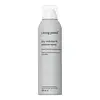What's inside
What's inside
 Benefits
Benefits

No benefits
 Concerns
Concerns

 Ingredients Side-by-side
Ingredients Side-by-side

Hydrofluorocarbon 152a
Alcohol Denat.
AntimicrobialVp/Va Copolymer
Va/Crotonates/Vinyl Neodecanoate Copolymer
Calcium Sodium Borosilicate
Water
Skin ConditioningCyclodextrin
AbsorbentZeolite
AbsorbentParfum
MaskingEthylcellulose
Propylene Glycol Dibenzoate
Skin ConditioningAminomethyl Propanol
BufferingAmmonium Glycyrrhizate
MaskingLinalool
PerfumingCitronellol
PerfumingCitral
PerfumingLimonene
PerfumingEthyl Linalool
MaskingMethyldihydrojasmonate
MaskingLinalyl Acetate
MaskingDipropylene Glycol
HumectantAmyl Salicylate
PerfumingPentadecalactone
MaskingTetramethyl Acetyloctahydronaphthalenes
MaskingIonone
AstringentCyclamen Aldehyde
MaskingHydrofluorocarbon 152a, Alcohol Denat., Vp/Va Copolymer, Va/Crotonates/Vinyl Neodecanoate Copolymer, Calcium Sodium Borosilicate, Water, Cyclodextrin, Zeolite, Parfum, Ethylcellulose, Propylene Glycol Dibenzoate, Aminomethyl Propanol, Ammonium Glycyrrhizate, Linalool, Citronellol, Citral, Limonene, Ethyl Linalool, Methyldihydrojasmonate, Linalyl Acetate, Dipropylene Glycol, Amyl Salicylate, Pentadecalactone, Tetramethyl Acetyloctahydronaphthalenes, Ionone, Cyclamen Aldehyde
Hydrofluorocarbon 152a
Dimethyl Ether
SolventSd Alcohol 40-B
AstringentVp/Va Copolymer
Zeolite
AbsorbentParfum
MaskingGlycerin
HumectantWater
Skin ConditioningAcetyl Triethyl Citrate
MaskingPEG/PPG-17/18 Dimethicone
EmulsifyingHelianthus Annuus Seed Extract
Skin ConditioningAmp-Isostearoyl Hydrolyzed Wheat Protein
CleansingButylene Glycol
HumectantBenzophenone-4
UV AbsorberIsopropyl Alcohol
SolventActinidia Chinensis Fruit Extract
EmollientAloe Barbadensis Leaf Extract
EmollientHedychium Coronarium Root Extract
MaskingMangifera Indica Fruit Extract
Skin ConditioningPassiflora Incarnata Extract
AstringentCitrullus Lanatus Fruit Extract
Skin ConditioningLeontopodium Alpinum Flower/Leaf Extract
Skin ConditioningLitchi Chinensis Fruit Extract
Skin ConditioningPhenoxyethanol
PreservativeStyrax Benzoin Resin Extract
MaskingChlorphenesin
AntimicrobialSodium Benzoate
MaskingPotassium Sorbate
PreservativeBenzoic Acid
MaskingCitric Acid
BufferingSorbic Acid
PreservativeLimonene
PerfumingHexyl Cinnamal
PerfumingLinalool
PerfumingCitral
PerfumingHydrofluorocarbon 152a, Dimethyl Ether, Sd Alcohol 40-B, Vp/Va Copolymer, Zeolite, Parfum, Glycerin, Water, Acetyl Triethyl Citrate, PEG/PPG-17/18 Dimethicone, Helianthus Annuus Seed Extract, Amp-Isostearoyl Hydrolyzed Wheat Protein, Butylene Glycol, Benzophenone-4, Isopropyl Alcohol, Actinidia Chinensis Fruit Extract, Aloe Barbadensis Leaf Extract, Hedychium Coronarium Root Extract, Mangifera Indica Fruit Extract, Passiflora Incarnata Extract, Citrullus Lanatus Fruit Extract, Leontopodium Alpinum Flower/Leaf Extract, Litchi Chinensis Fruit Extract, Phenoxyethanol, Styrax Benzoin Resin Extract, Chlorphenesin, Sodium Benzoate, Potassium Sorbate, Benzoic Acid, Citric Acid, Sorbic Acid, Limonene, Hexyl Cinnamal, Linalool, Citral
 Reviews
Reviews

Ingredients Explained
These ingredients are found in both products.
Ingredients higher up in an ingredient list are typically present in a larger amount.
Citral is a fragrance and used to add a lemon-like scent to products. It is both naturally found in plants and created synthetically. In plants, it is commonly occurring in lemon myrtle, lemongrass, lemon tea-tree, lemon verbena, and other citruses.
The EU mandates Citral be listed separately as a fragrance. It is a known allergen and may cause contact dermatitis. Citral can also used as a masking ingredient.
The term 'fragrance' is not regulated in many countries. In many cases, it is up to the brand to define this term. For instance, many brands choose to label themselves as "fragrance-free" because they are not using synthetic fragrances. However, their products may still contain ingredients such as essential oils that are considered a fragrance.
The term 'citral' is a collective term for two geometric isomers: geranial/Citral A and neral/Citral B.
Learn more about CitralWe don't have a description for Hydrofluorocarbon 152a yet.
Limonene is a fragrance that adds scent and taste to a formulation.
It's found in the peel oil of citrus fruits and other plants such as lavender and eucalyptus. The scent of limonene is generally described as "sweet citrus".
Limonene acts as an antioxidant, meaning it helps neutralize free radicals.
When exposed to air, oxidized limonene may sensitize the skin. Because of this, limonene is often avoided by people with sensitive skin.
The term 'fragrance' is not regulated in many countries. In many cases, it is up to the brand to define this term. For instance, many brands choose to label themselves as "fragrance-free" because they are not using synthetic fragrances. However, their products may still contain ingredients such as essential oils that are considered a fragrance.
Learn more about LimoneneLinalool is a fragrance and helps add scent to products. It's derived from common plants such as cinnamon, mint, citrus, and lavender.
Like Limonene, this ingredient oxidizes when exposed to air. Oxidized linalool can cause allergies and skin sensitivity.
This ingredient has a scent that is floral, spicy tropical, and citrus-like.
Learn more about LinaloolParfum is a catch-all term for an ingredient or more that is used to give a scent to products.
Also called "fragrance", this ingredient can be a blend of hundreds of chemicals or plant oils. This means every product with "fragrance" or "parfum" in the ingredients list is a different mixture.
For instance, Habanolide is a proprietary trade name for a specific aroma chemical. When used as a fragrance ingredient in cosmetics, most aroma chemicals fall under the broad labeling category of “FRAGRANCE” or “PARFUM” according to EU and US regulations.
The term 'parfum' or 'fragrance' is not regulated in many countries. In many cases, it is up to the brand to define this term.
For instance, many brands choose to label themselves as "fragrance-free" because they are not using synthetic fragrances. However, their products may still contain ingredients such as essential oils that are considered a fragrance by INCI standards.
One example is Calendula flower extract. Calendula is an essential oil that still imparts a scent or 'fragrance'.
Depending on the blend, the ingredients in the mixture can cause allergies and sensitivities on the skin. Some ingredients that are known EU allergens include linalool and citronellol.
Parfum can also be used to mask or cover an unpleasant scent.
The bottom line is: not all fragrances/parfum/ingredients are created equally. If you are worried about fragrances, we recommend taking a closer look at an ingredient. And of course, we always recommend speaking with a professional.
Learn more about ParfumWe don't have a description for Vp/Va Copolymer yet.
Water. It's the most common cosmetic ingredient of all. You'll usually see it at the top of ingredient lists, meaning that it makes up the largest part of the product.
So why is it so popular? Water most often acts as a solvent - this means that it helps dissolve other ingredients into the formulation.
You'll also recognize water as that liquid we all need to stay alive. If you see this, drink a glass of water. Stay hydrated!
Learn more about WaterWe don't have a description for Zeolite yet.